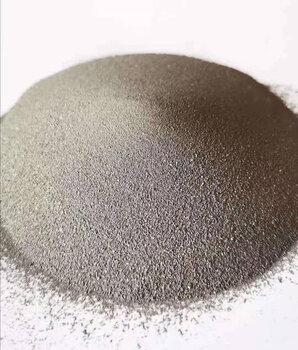1. Introduction
In the past 48 hours, a major breakthrough in aerospace additive manufacturing has reignited global interest in high-performance metal powders: Relativity Space announced the successful test firing of its fully 3D-printed Aeon R rocket engine, constructed primarily from Ti6Al4V powder. This milestone underscores the growing reliance on titanium powder for next-generation engineering—and raises critical questions about cost, supply chain stability, and how titanium stacks up against other refractory metal powders like tungsten and molybdenum.

As industries from biomedical implants to defense systems increasingly adopt powder-based manufacturing, understanding the nuances between titanium powder, molybdenum powder, and tungsten powder is no longer optional—it’s essential. This article dives deep into the chemistry, production methods, pricing, and real-world applications of these advanced materials, with a special focus on titanium powder for 3d printing and its competitive landscape.
2. Titanium Powder: Types, Production, and Key Variants
2.1. Pure Titanium Powder and Alloyed Forms
Pure titanium powder is prized for its biocompatibility and corrosion resistance, but most industrial applications—especially in aerospace and medical sectors—rely on titanium alloy powder. The most common is Ti6Al4V powder (also known as Ti64 powder), which blends titanium with 6% aluminum and 4% vanadium to enhance strength-to-density ratio and high-temperature performance. Other specialized variants include titanium nitride powder (used for hard coatings), titanium carbide powder (for cutting tools), and titanium diboride powder (TiB2 powder), valued for its extreme hardness and electrical conductivity.
2.2. Production Methods: HDH vs. Gas Atomization

Titanium metal powder is primarily made via two routes: Hydride-Dehydride (HDH) and gas atomization. HDH titanium powder is angular, cost-effective, and suitable for pressing and sintering—but not ideal for 3D printing due to poor flowability. In contrast, spherical titanium powder produced through gas atomized titanium powder techniques offers excellent flow and packing density, making it the gold standard for titanium powder additive manufacturing. This distinction directly impacts titanium powder price per kg, with spherical grades often costing 2–3 times more than HDH equivalents.
3. Titanium Powder Pricing and Market Dynamics
The titanium powder price fluctuates significantly based on purity, morphology, and alloy composition. As of mid-2024, pure titanium powder costs between $80–$150 per kg, while Ti6Al4V powder price ranges from $150–$300/kg. For high-end applications requiring certified spherical powder, the titanium powder for 3d printing price can exceed $400/kg. Factors like global supply constraints, energy-intensive production, and demand from aerospace giants drive these premiums. Buyers seeking to buy titanium powder should evaluate not just upfront cost but also yield, recyclability, and compatibility with their AM systems.
International titanium powder suppliers like AP&C (a GE Additive company), VSMPO-AVISMA, and TLS Technik dominate the market, though new entrants are emerging in Asia and North America. When sourcing titanium powder for sale, verify certifications for oxygen content (<1000 ppm) and particle size distribution (typically 15–45 µm for laser powder bed fusion).
4. Comparative Analysis: Titanium vs. Tungsten vs. Molybdenum Powders

4.1. Material Properties and Use Cases
While titanium powder excels in lightweight, high-strength applications, tungsten powder and molybdenum powder serve different niches. Tungsten metal powder boasts the highest melting point of all metals (3,422°C) and extreme density (19.25 g/cm³), making it ideal for radiation shielding, kinetic penetrators, and high-temperature furnaces. Spherical tungsten powder is increasingly used in binder jetting, though its tungsten powder price per kg ($30–$80) is lower than titanium’s—but its brittleness limits structural use.
Molybdenum powder, meanwhile, offers a balance: high melting point (2,623°C), good thermal conductivity, and lower density than tungsten. Molybdenum disulfide powder (MoS2 powder) is widely used as a dry lubricant, while molybdenum metal powder finds roles in electronics and high-strength alloys like TZM powder. Molybdenum powder price typically ranges from $40–$100/kg, depending on purity.
4.2. Additive Manufacturing Compatibility
Titanium powder remains the dominant metal for medical and aerospace 3D printing due to its biocompatibility and strength-to-weight ratio. Tungsten carbide powder and fused tungsten carbide powder are used in wear-resistant coatings via thermal spray, but their use in mainstream AM is limited by cracking risks. Molybdenum graphite powder and molybdenum disilicide powder (MoSi2 powder) show promise in high-temp AM but require specialized inert atmospheres.
Notably, none of these materials are interchangeable—each serves a distinct engineering need. For instance, titanium coated diamond powder leverages Ti’s reactivity to bond diamond grits, while burnt titanium powder coat refers to surface oxidation during processing, not a functional product.
5. Specialized Titanium Powders and Emerging Trends
Beyond standard grades, niche forms like titanium nanopowder and TiO2 nano powder are gaining traction in catalysis and sunscreens—but these are chemically distinct from titanium metal powder. Similarly, titanium flash powder (a pyrotechnic mix) should never be confused with industrial-grade ti powder. Safety note: fine titanium dust is flammable and requires careful handling under inert gas.
Recent R&D focuses on reducing titanium powder cost through plasma atomization and recycling of AM support structures. Meanwhile, demand for TiH2 powder (titanium hydride) as a foaming agent in metal matrix composites continues to grow.
6. Conclusion
Choosing between titanium powder, molybdenum powder, and tungsten powder isn’t about which is ‘better’—it’s about matching material properties to application requirements. For lightweight, high-performance 3D printed parts, titanium powder—especially spherical Ti6Al4V—remains unmatched. For extreme heat or density, tungsten and molybdenum powders fill critical roles. As additive manufacturing scales, expect innovations in powder production to gradually ease titanium powder price pressures, but for now, strategic sourcing from a reliable titanium powder supplier is key to project success.
Our Website founded on October 17, 2012, is a high-tech enterprise committed to the research and development, production, processing, sales and technical services of ceramic relative materials such as Titanium. Our products includes but not limited to Boron Carbide Ceramic Products, Boron Nitride Ceramic Products, Silicon Carbide Ceramic Products, Silicon Nitride Ceramic Products, Zirconium Dioxide Ceramic Products, etc. If you are interested, please feel free to contact us.
